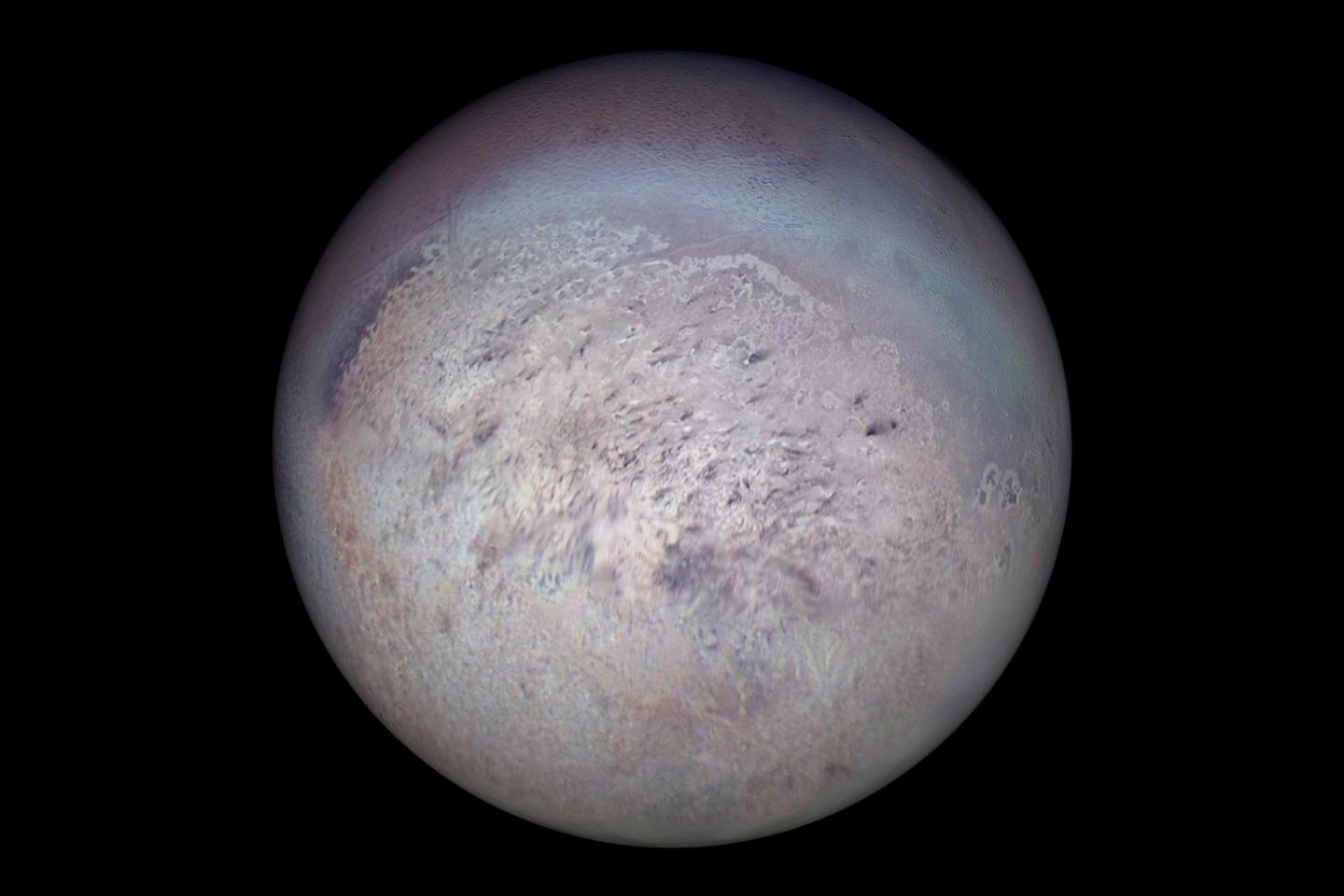Neptune's Moon Triton Has a Rare Kind of Ice

Neptune's largest moon Triton boasts an uncommon icy mixture of carbon monoxide and nitrogen, which could help astronomers better understand the conditions of other distant alien worlds.
Using the Gemini Observatory in Chile and the high-resolution spectrograph called IGRINS (Immersion Grating Infrared Spectrometer), a visiting instrument for Gemini, astronomers detected a distinct infrared signature on Triton, revealing a mixture of carbon monoxide and nitrogen frozen as solid ice. This finding helps explain seasonal atmospheric changes on Triton and how material is transported across the moon's surface via geysers, according to a statement.
Prior to detecting this unique signature on Triton, researchers first identified the specific wavelength of infrared light absorbed by an ice mixture of carbon monoxide and nitrogen molecules in the lab.
"While the icy spectral fingerprint we uncovered was entirely reasonable, especially as this combination of ices can be created in the lab, pinpointing this specific wavelength of infrared light on another world is unprecedented," Stephen Tegler, lead author of the study from Northern Arizona University's Astrophysical Materials Laboratory, said in the statement.
The icy mixture detected on Triton could help explain the moon's iconic geysers, which are the dark, windblown streaks first observed by NASA's Voyager 2 spacecraft in the moon's south polar region. These distinct streaks are believed to be erupted material from an internal ocean, or an icy mixture that migrates around the surface in response to changing seasonal patterns of sunlight, according to the statement.
"Despite Triton's distance from the sun and the cold temperatures, the weak sunlight is enough to drive strong seasonal changes on Triton's surface and atmosphere," Henry Roe, deputy director of Gemini and a member of the research team, said in the statement. "This work demonstrates the power of combining laboratory studies with telescope observations to understand complex planetary processes in alien environments so different from what we encounter every day here on Earth."
In fact, NASA's New Horizons spacecraft found that carbon monoxide and nitrogen ices coexist on Pluto. However, the recent findings are the first evidence of these ices mixing, according to the statement.
Get the Space.com Newsletter
Breaking space news, the latest updates on rocket launches, skywatching events and more!
Therefore, the study, which will be published in The Astronomical Journal, sheds light on the possible composition of ices and seasonal variations in the atmosphere on other distant worlds beyond Neptune.
- Mysterious 'Sub-Neptunes' Are Probably Water Worlds
- Pluto May Have a Gooey Carbon Layer Beneath Its Crust
- Hubble Telescope Watches the Weather on Uranus and Neptune
Follow Samantha Mathewson @Sam_Ashley13. Follow us on Twitter @Spacedotcom and on Facebook.
Join our Space Forums to keep talking space on the latest missions, night sky and more! And if you have a news tip, correction or comment, let us know at: community@space.com.

Samantha Mathewson joined Space.com as an intern in the summer of 2016. She received a B.A. in Journalism and Environmental Science at the University of New Haven, in Connecticut. Previously, her work has been published in Nature World News. When not writing or reading about science, Samantha enjoys traveling to new places and taking photos! You can follow her on Twitter @Sam_Ashley13.









